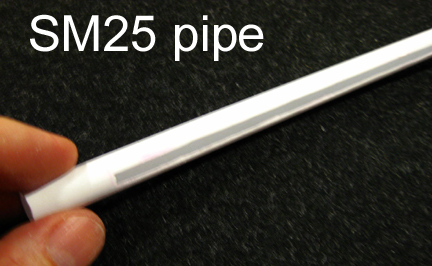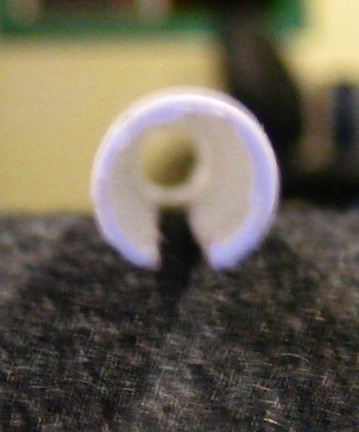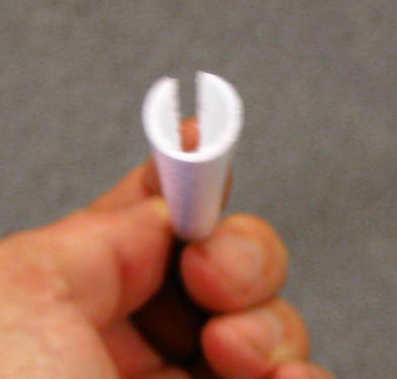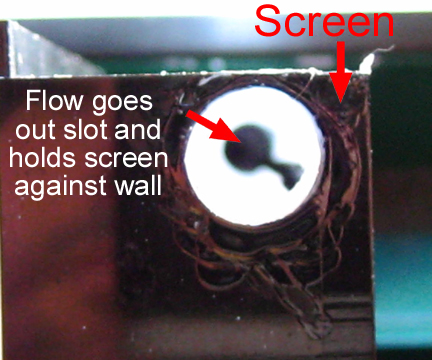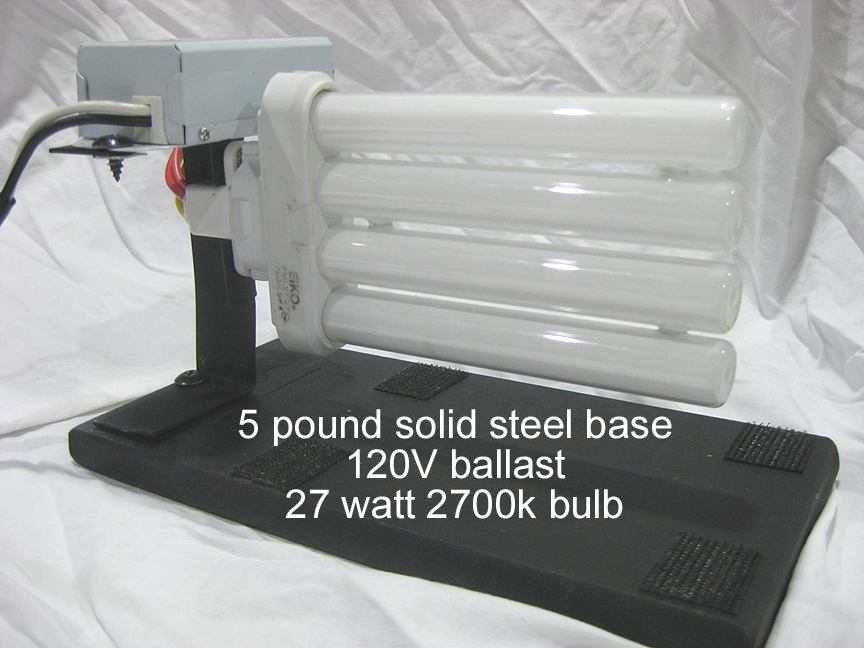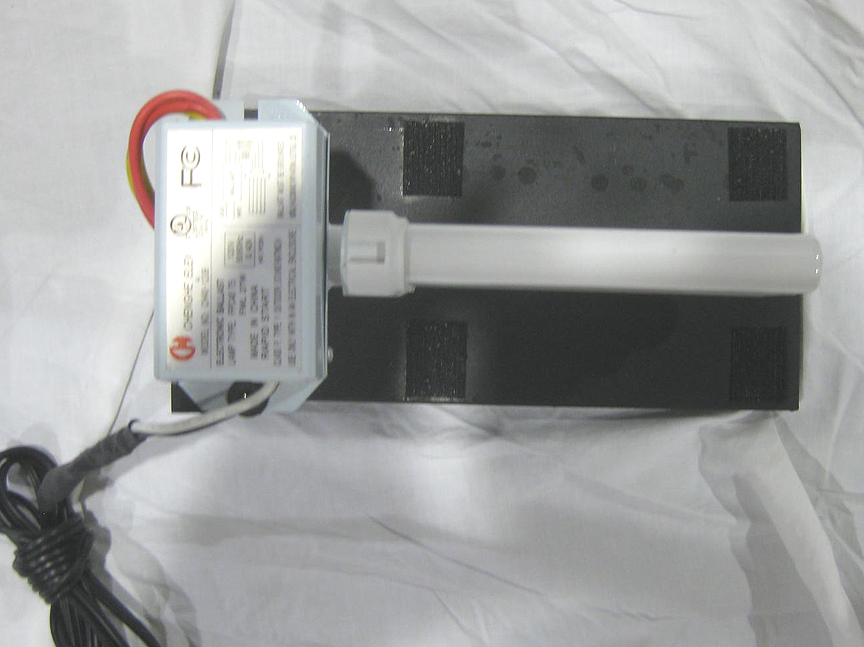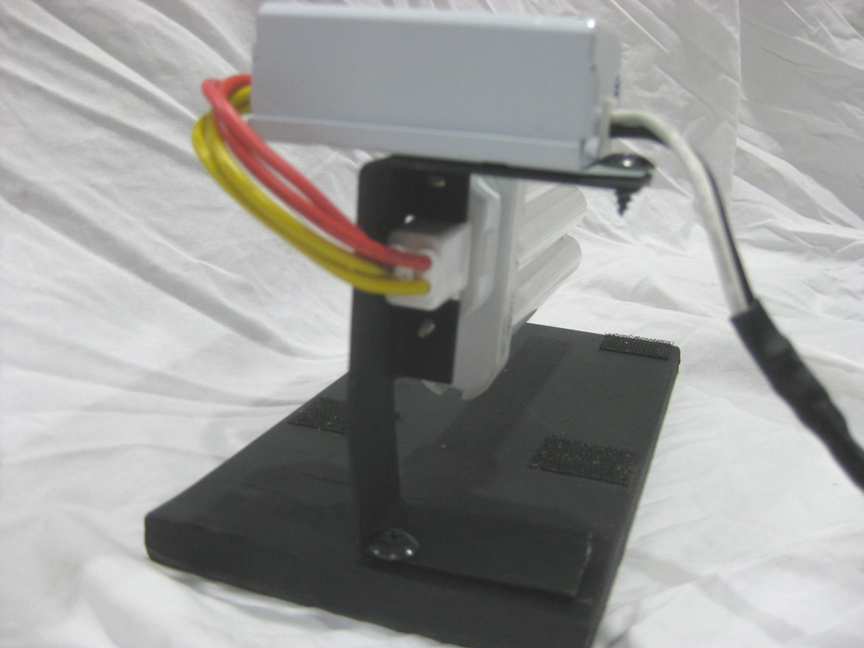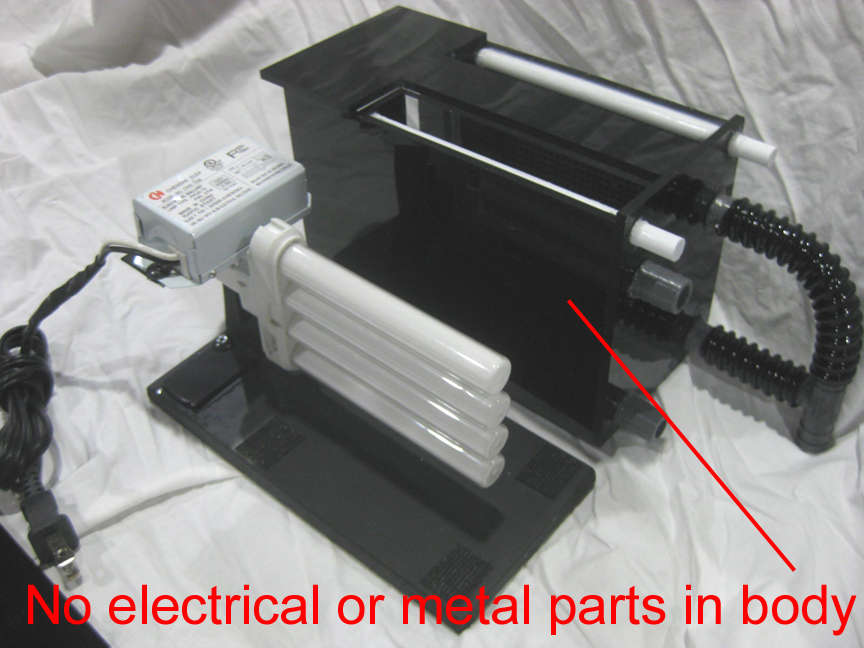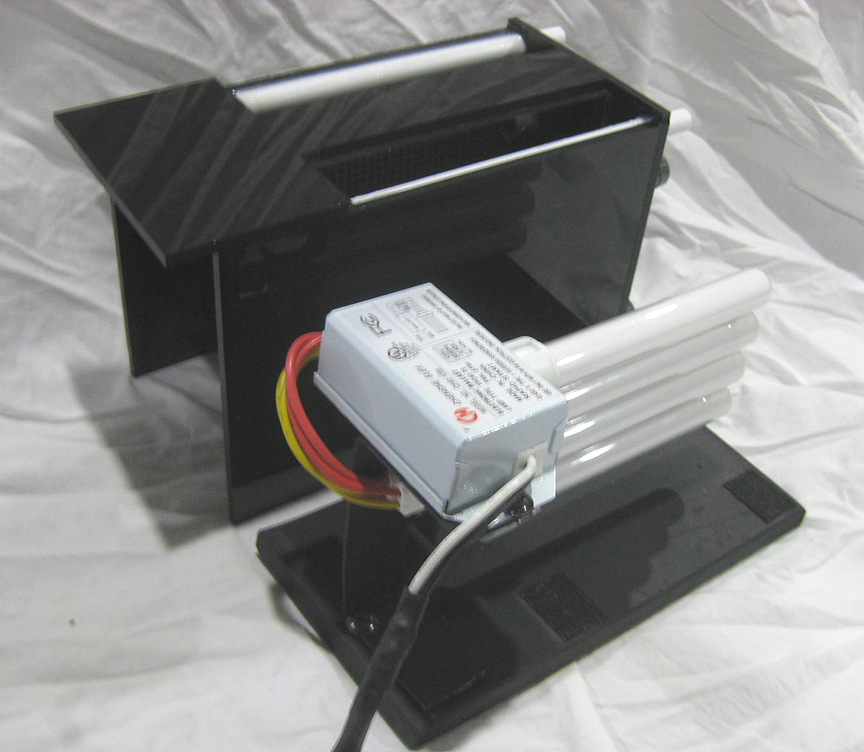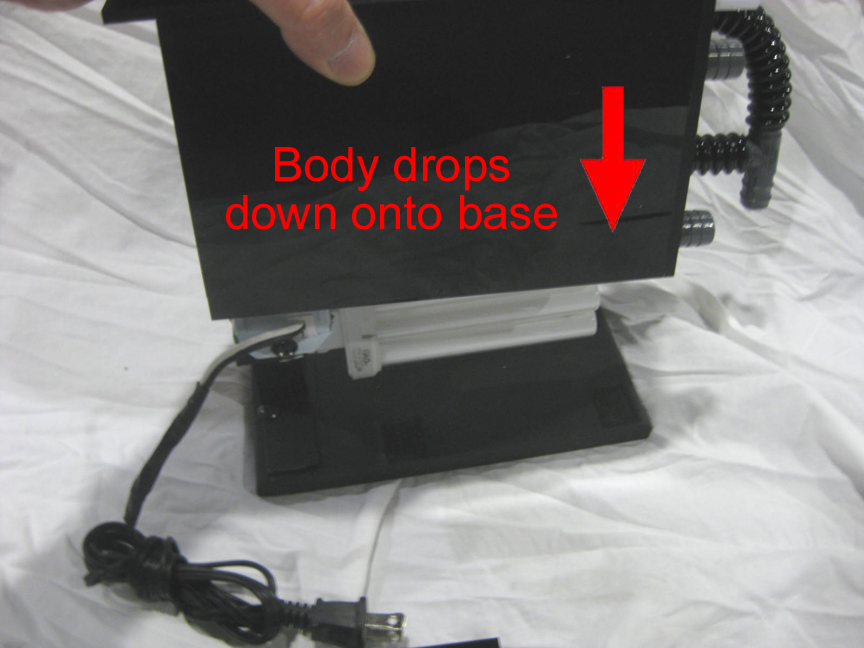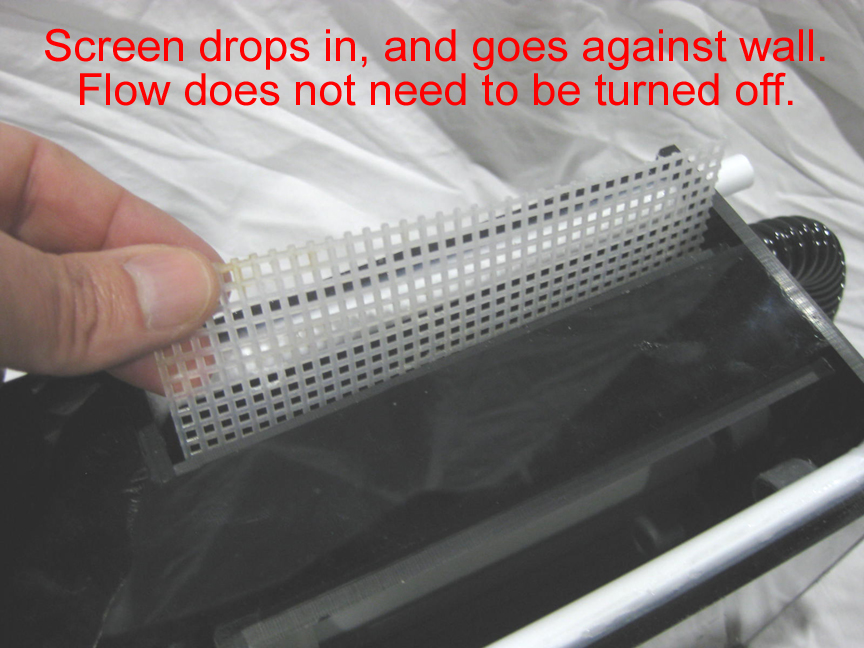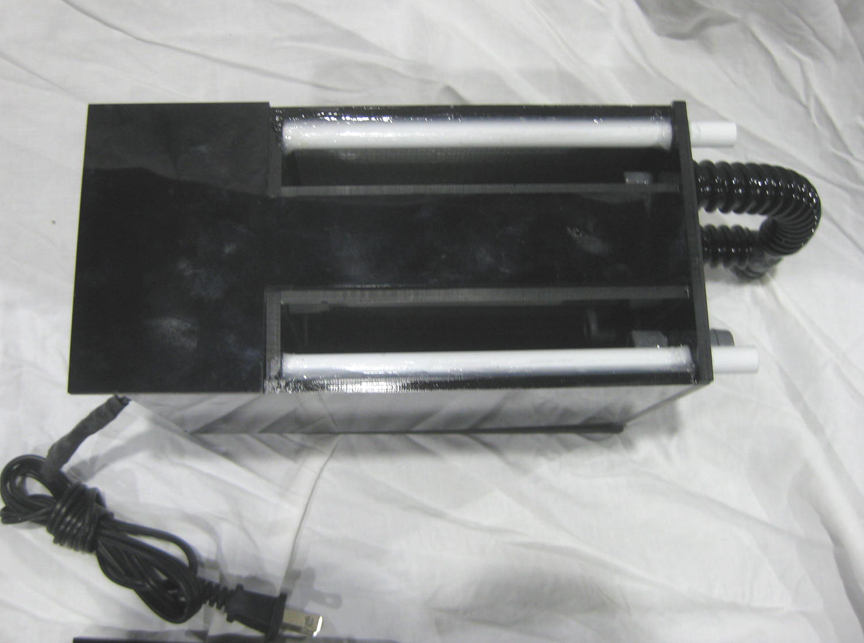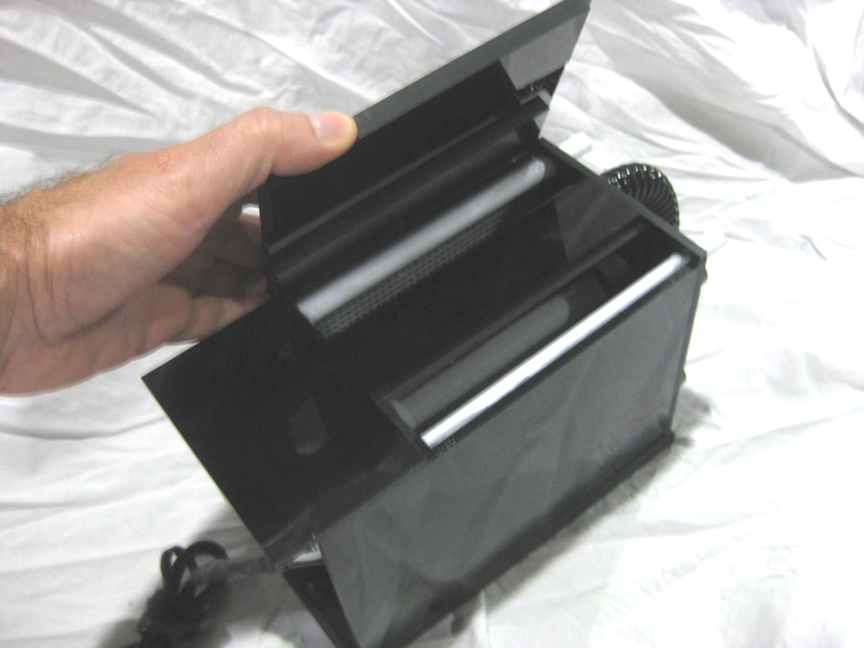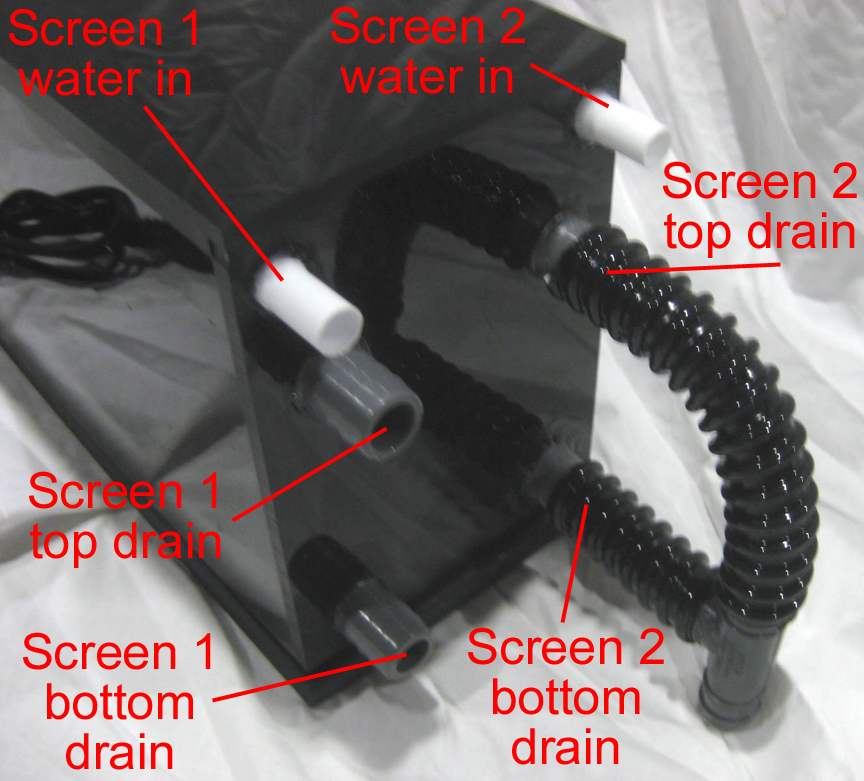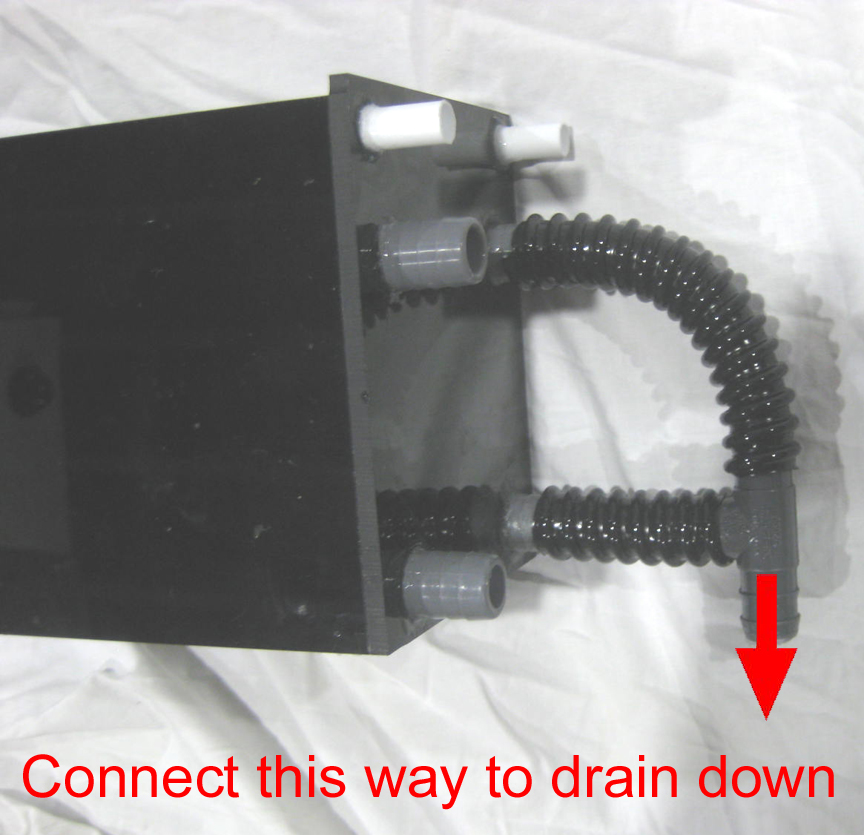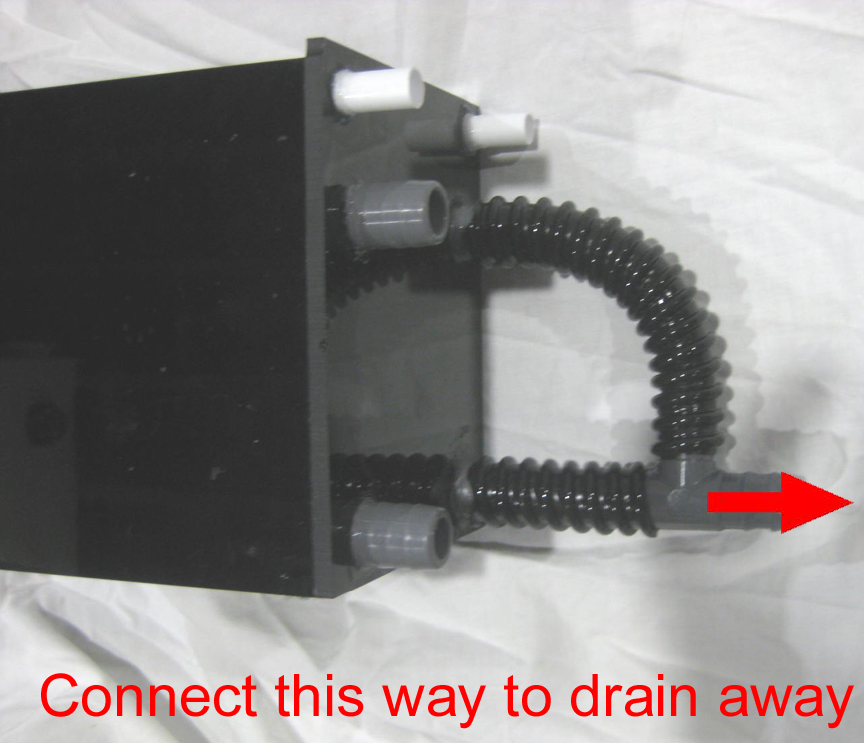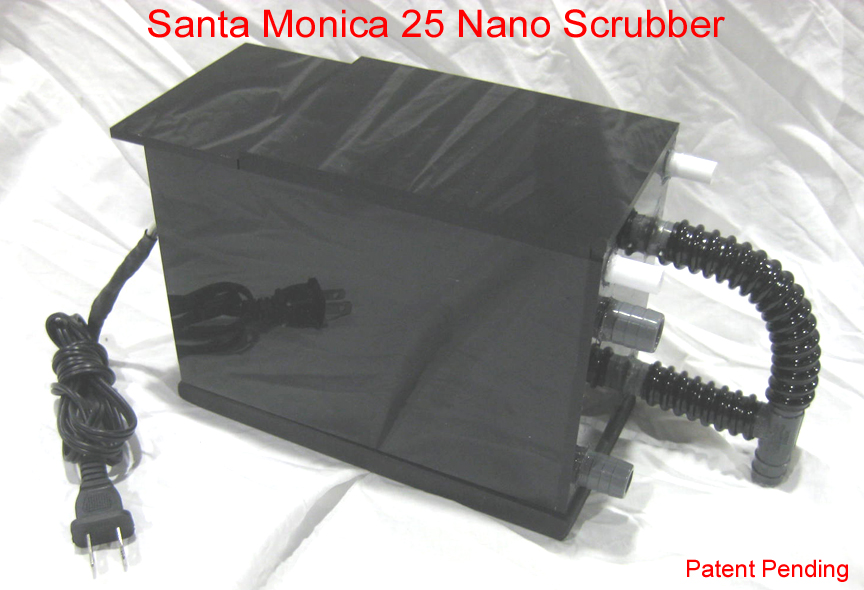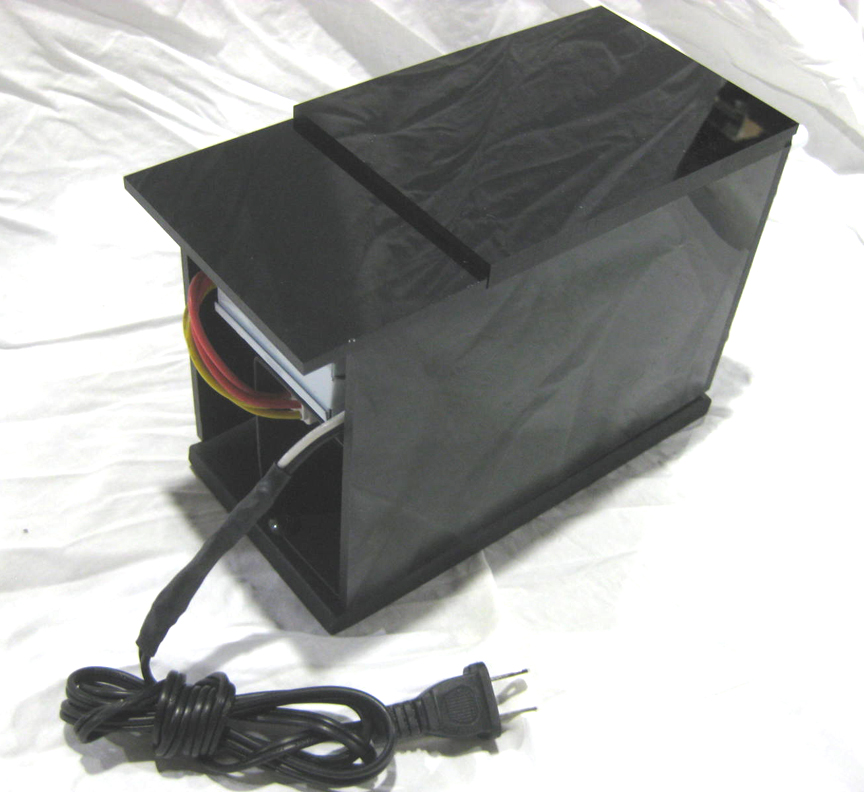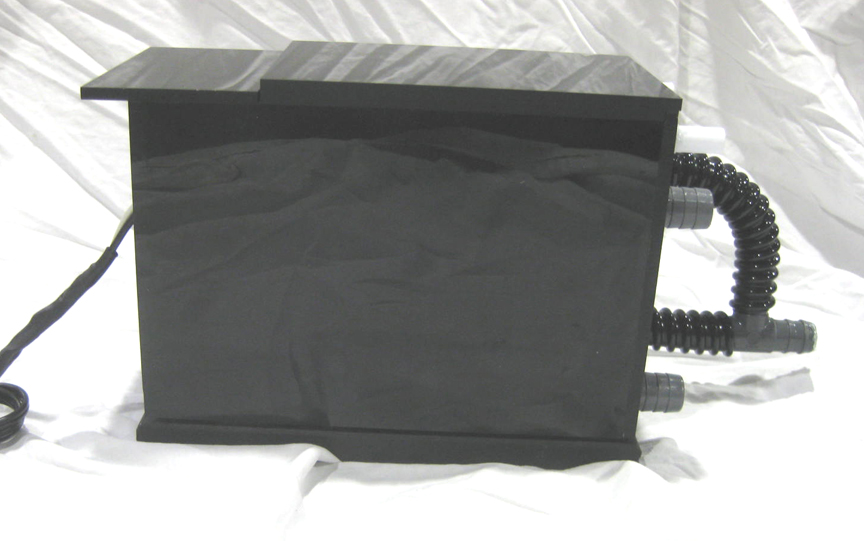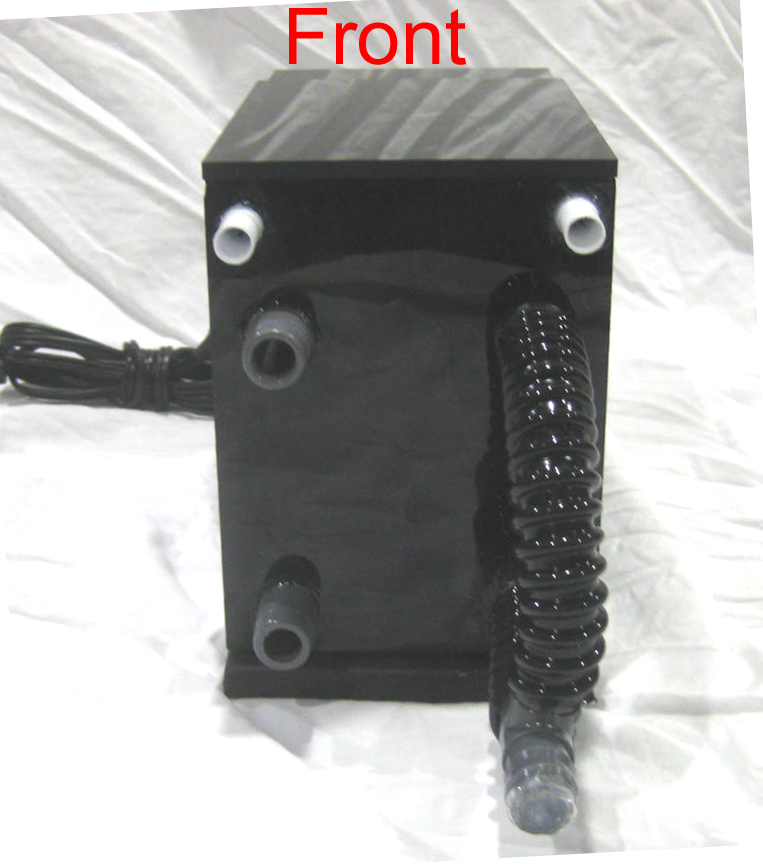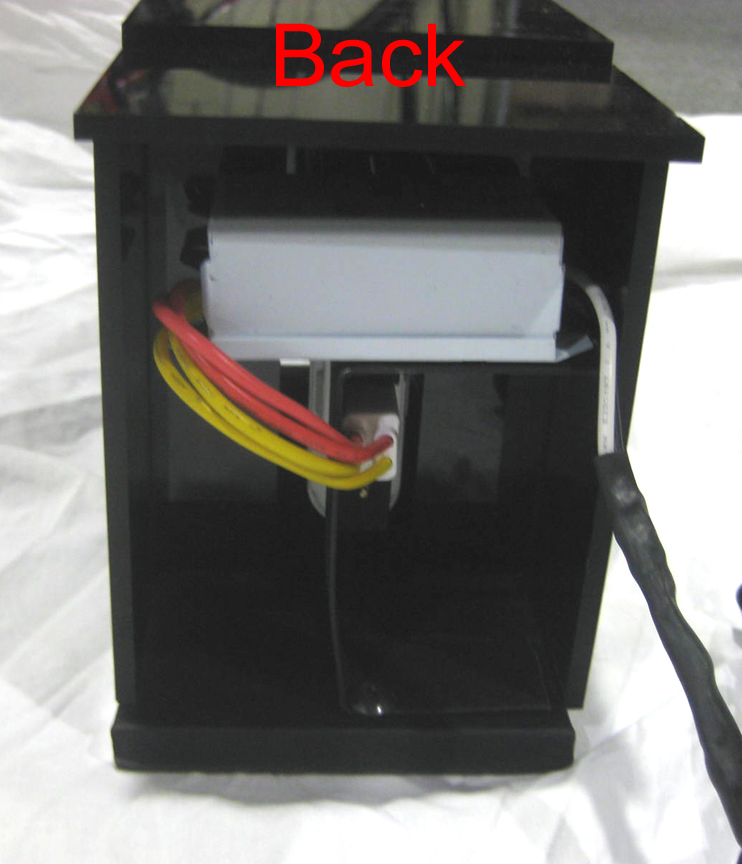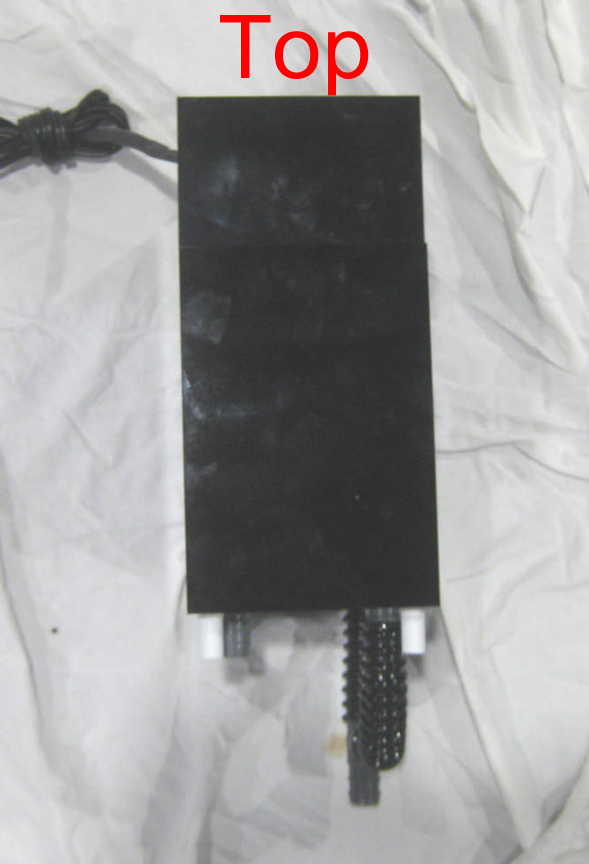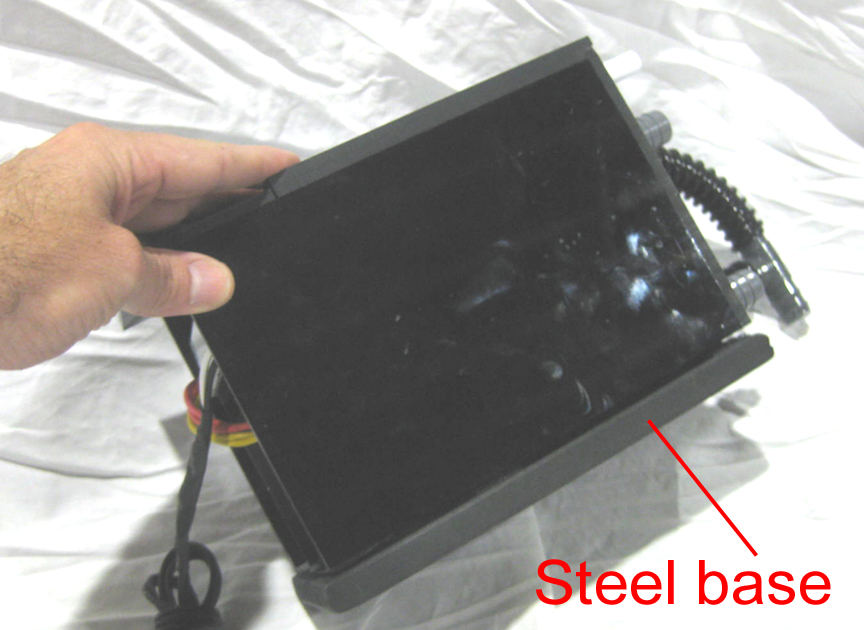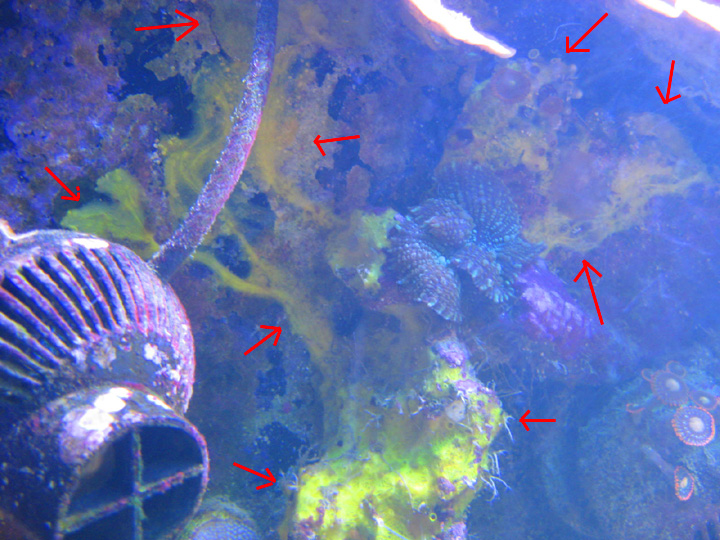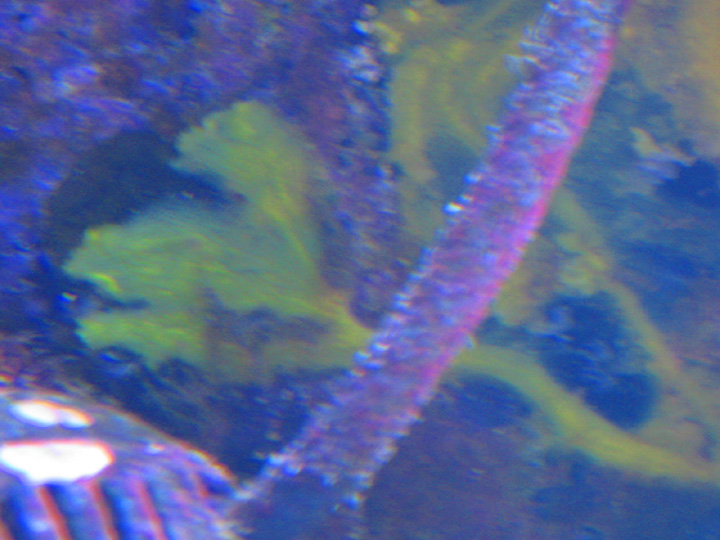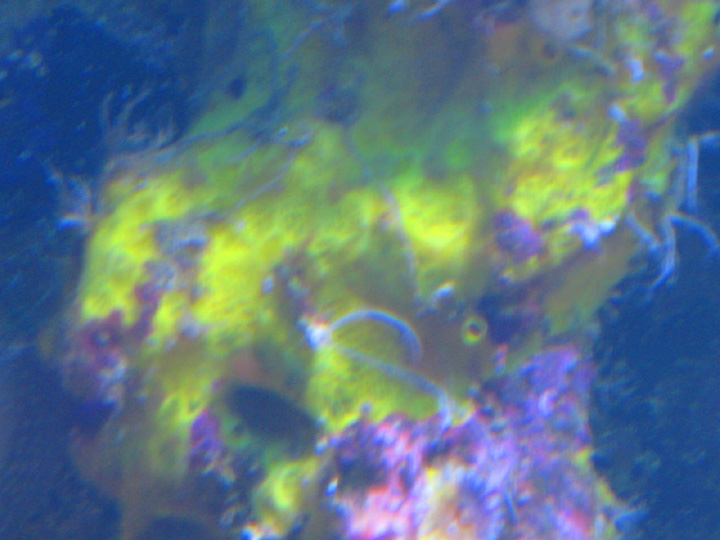Successes:
Calvin415 on the scrubber site: "I think the results are outstanding, by far the cleanest tank I've ever had with the least amount of maintenance. I clean the scrubber once a week, skimmer once every two weeks, and clean the film off the glass once a week... I don't hold back on feed, I feed frozen, pellets, arctic pods and phytofeast all the time!"
Srusso on the RC site: "My last harvest was my heaviest yet! I am not weighing my harvest yet but man when your scrapping over an inch thick layer of algae off your screen you feel like you can truly feed your tank any mount of food!! I actually tell other people its "ok" to feed the fish! I should have made it clear that this is two total inches. Once on each side of my screen."
Eums on the RC site: "Tank PH is rock solid stable at 8.41-8.44 PH (with the skimmer it would swing 0.15). Only need to clean the front glass every week or two. Nuance algae is gone (got a frag with GHA and the GHA died off). Cleanup crew is small (2 turbo,7 astraea, 4 certh, 5 margarita, 5 trochus, 1 Nassarius). Dont need to worry about over feeding, has no impact to the tank other than more food for the micro fauna. Increased micro fauna (tons of red feather dusters, pods, etc). Happy fat fish from all the food available, water clarity improved (tint gone, no longer running carbon)"
Maglofster on the RC site: "So far I am amazed! Almost no algae in the DT since startup, and I have been flooding the tank with food. For example, today: 6 cubes Supershrimp, 2 cubes Formula2 and 2 cubes Lobster eggs. Without the scrubber I'm sure there would have been lots. Also I only have Riffkeramik (from Korallenwelt) which is supposed to give lots of algae (during startup) due to it's content of silcates, almost none of that either. So to summarize.. I'm a happy camper!"
King_richard on the RC site: "My little update on the scrubber. For the first two weeks of my redone scrubber I was rinsing the screen and occasionally scraping it every 3 days or so since the black stuff was covering it rather quickly in areas. It's about time for another cleaning of it either today or tomorrow but I did a water change the other day and tested only for nitrates which are now pretty much 0, I can't see any color difference and the natural seawater that I use has the same reading of 0. So within the two weeks of my rebuilt scrubber, my nitrates have dropped from the almost 5ppm to 0ppm. Also, in the older thread, I was the one who had the nasty case of green water, well our water is now crystal clear and my standards for calling it crystal clear are rather high, lol. The only things in the water column are food that we feed and live food from the dsb and scrubber that make it into the display tank. It's clear enough that you don't see the light rays penetrating through the water if that makes sense."
Acts4me on the RC site: "WOW is all I can say! I have had my scrubber running since [2 months earlier]. I posted pics of the algae farm I had going on. I have cleaned my scrubber twice and almost all of the algae is gone from my display tank. I thought it would take much longer. I still have a few patches but the bulk is gone. I am going to build scrubbers for the rest of my tanks starting tomorrow. The ATS is the single best addition to my tank I have done as far as equipment goes."
Fragfarmer on the scrubber site: "this is really helping my tank a lot!! I've been plagued with slimey green cyano in my tank for months. It's disappearing. Getting thinner and lighter shade of green every day. I'm so happy to see coraline growing on my glass again, instead of green slime. Thank you!! I can't completely express my gratitude from behind this keyboard."
Harry_y on the RC site: I made mine [scrubber] out of a storage bin. The nice thing is my tank is doing better now than it ever has, I feed heavier and I'm not skimming out the food that the corals want"
Slow_leak on the RC site: "I have run ATS since September following these guidelines. SPS have grown and people in local club have commented that SPS are growing out nicely. I have a continuous diatom problem before the ATS and that was gone in two weeks. Only trace valonia remains. SPS are easy this way. Soft corals have not flourished as well in this lower nutrient system, but that is not my goal. Unfortunately I had one fish that never reacted well to captivity die after year. The ATS handled it very well. It is a very very forgiving system that most people run with an old set up or incorrectly maintained. I haven't had any [coral] bleaching since I started and will keep it long term."
Fragglerocks on the RC site: "starting levels: Nitrate was around 30, P04 was a whopping 2.21 YIKES! after a month and half with the scrubber: Nitrate: ZERO!!! P04: 0.11 and still steadily dropping! Tested with Hanna meter. My feeding schedule - I feed 2 frozen cubes a day of assorted store bought foods, i try to mix it up a little, but the equivalent is 2 cubes per day. I also feed a pinch of flakes once a day and dose 2 cap-fulls of DT Phyto once a week. I have no protein skimmer anymore, I sold my Tunze months ago. I no longer run phosgaurd since adding the scrubber. The only thing I do is a 2 part dose weekly, Iodine every once in a while, and I run carbon in the sump. I don't do water changes anymore, just top-offs. and with all this feeding the fish are fat, corals healthy and growing (mix of SPS, LPS, and softies...), and macro in the DT has been dwindling since adding the scrubber. Actually, the reason I wanted to add the scrubber to begin with was the overgrowing macro in the DT. I wanted a natural and gradual way to get rid of it without the use of chemicals, and this has worked wonderfully. Just make sure to clean the screen weekly. I just wanted to add that the day I learned about algae scrubbers was one of the best days in my saltwater journey, thank you Chris! The scrubber has put an end to one of my biggest concerns with my tank, and a great side-effect is that it oxygenates the water and all the corals/fish are extremely well fed and thriving. all of my sps are super happy now and the growth is exponentially faster than when I diddnt have the scrubber and only ran the skimmer. In fact, I had a tri-color colony about 6 inches x 7 inches that had been slowly STN'ing for over 6 months, 3 weeks after I added the scrubber it started coloring up again, stopped stn'ing, and has been showing signs of new growth. I encourage you to set up a small experimental tank. get a biocube or aquapod and fill it with your choice of sps, good lighting, and sufficient flow. Add a scrubber and let us know what happens".
Bguile on the RC site: "I think I'll go ahead and chime in on this one since I've been running skimmerless on my 210g since [7 months earlier] and setup a new 40g that has basically been only ATS since it was built [3 months ago]. I haven't done a water change since it's been running, water parameters stay unusually stable and my ammonia, nitrates, and phospates are all or very very close to 0. In fact, I started overfeeding the system when it only had inverts in it to start the algae growth on the ATS. I had NEVER fed so much to a tank filled with fish for fear of algae and cyano. Back [7 months ago] I decided to try going skimmerless on my [other tank] 210, after I wasn't getting the success I thought I should with it. I immediately noticed that the small corals I did have began opening and growing like gangbusters. However, I wasn't keeping up with water changes as I should have been and algae and cyano went crazy too. Just as I decided to build a smaller reef tank and make the 210 a FOWLR, I happened upon ATS' looking for nitrate reducing solutions. So after I tested the ATS on my 40g. I'm in the process of redesigning it to an enclosed unit, but it's maintaining the system the way it is. To really clean up the sand I need to add approx another 100W of light [to the scrubber] but since it's becoming a FOWLR, I haven't put much urgency on it. In closing, I must admit I'm VERY excited about the results that ATS's have shown me and that my limitations (read, money) have now been removed for me to run as many specialized tanks as I would like without the need to purchase an expensive skimmer. Oh...I wanted to add that I NEVER had any of the diatoms that usually shows up in new tanks using the ATS. Since it's been installed, I've only run into one problem when I started seeing a hairy type algae poking out of my sand. I found out I was choking off my return flow by not removing the included mechanical filter on my Eheim. Once I removed that within days the algae was gone and I once again have clean grey/white sand!!"
Nac on the scrubber site: "Nitrate and Phosphate levels are at zero at last test. No water changes ever, and had fish for 6 weeks now. Algae on the live rock, which was growing like crazy, is starting to slowly subside. The growth on the screen is still pretty dark, I'm cleaning it twice a week. I put both lights on one side of the screen, might add wattage."
Dlp40 on the scrubber site: "Well since my last post a few weeks ago I think i have finally gotten my ATS working. I tested the water today and from 20ppm nitrate to 0.00ppm and po4 of over .2 down to unmeasureable. Not to say i haven't had my snags in the 2 months I have been using it, but it's well worth the trouble. I mean I havent done a water change in 2 months, this has already paid for the ATS twice. another testimit on how much i like this DIY filter is, even when i had the wrong screen and lights on it, my algea from the tank disapeared. I had a few rocks completly covered with hair algae and it disapeared in less then one month."
Maxhtic on the UR site: "No need to spend your cash for all these unecessary "media"... my oppinion and personal experience. Alga Turf Scrubber mate... and you will NEVER spend any more money on filtration, saving extra cash every month for livestock. Simple as that - give it some chance and you will change your reefing procedures for ever."
Albass15 on the UR site: "build yourself a turf scrubber. I only do a 20 percent water change once a month and my nitrate and phosphate is zero."
Mrbncal on the RC site: When I set this 75 back up 4 years ago I battled with my Euroreef skimmer for 7-8 months. Every couple of weeks it would go into overflow mode for a couple days and flow teh skimmate back into the tank. Things looked horrible every time it would overflow. Just got sick of dealing with it. I unplugged it and let the tank go. Three months with no attention. Almost tore it down. 90 days later when I scrubbed the front glass I was surprised to find that things had gotten better since turning off the skimmer. So i left it like that for about a year and a half. But hair and bubble algae had a serious foothold. I couldnt feed much. Then I read the articles on ATS's and eventually decided to try one. So I built a bucket scrubber and haven't looked back. Is it tank of the month material? No. But my maintenance time is a lot less than those guys also. I still have great growth on corals and most important I enjoy the hobby again. My only source of cal/alk is kalk in the top-off water and I run a bag of chemipure hanging in the sump. I have not changed any water since [6 mo ago] (30 gal). (I had a hot day prior to hooking my chiller up and things got a little soupy, stupid gamble and I lost a few corals). I have been running ats since [14 months ago]. Anemones, tubeworms of all types(cocoworms), photosynth gorgs and LPS as well as green slimer and birdnest, pocillipora have all grown very well. My scrubber is underpowered, I use a MJ1200. So my algae is browner than what it should be. I am using 120 watt equivilent indoor/outdoor CFL bulbs. They have a 3500K rating, which is why they are kind of yellow. I alternate changing the bulbs out. So one bulb is replaced every month and a half (this is apprx, I try to use the bulbs 3to4 months). I have some plans to redo the scrubber but it works so well right now I keep putting the rebuild off. I have a slow drip on the pipe in the pic above, you can see some salt creep everywhere. Another thing that needs redoing. The scrubber gets cleaned at least every 2 weeks, but I really try to clean it every Sunday morning. I get a coffee cup full of algae every time as long as I am feeding regularly. Right now though, the limiting factor on my scrubber is flow. I only have about 3/4 of the flow that my screen size demands according to the guidelines (35gph per inch of screen). Once I replace that with a 350+ GPH pump my algae should green up. I havent checked N&P since it went to 0's or undetectable. Took a sample to the store and they verified my results with their test. So I assume its still there as I dont have any indication it has changed. I have not checked Cal/Alk/PH lately either. The clams are putting on new white growth, the grape and red monti caps are getting big. Acros dont grow as fast as the guys with cal reactors I spose, but they do pretty well."

